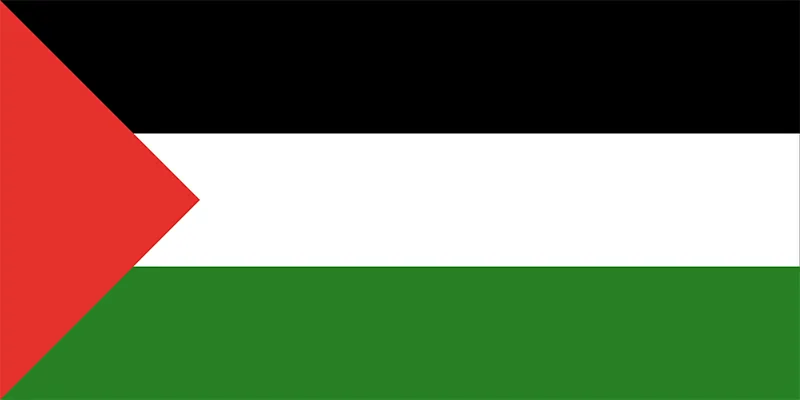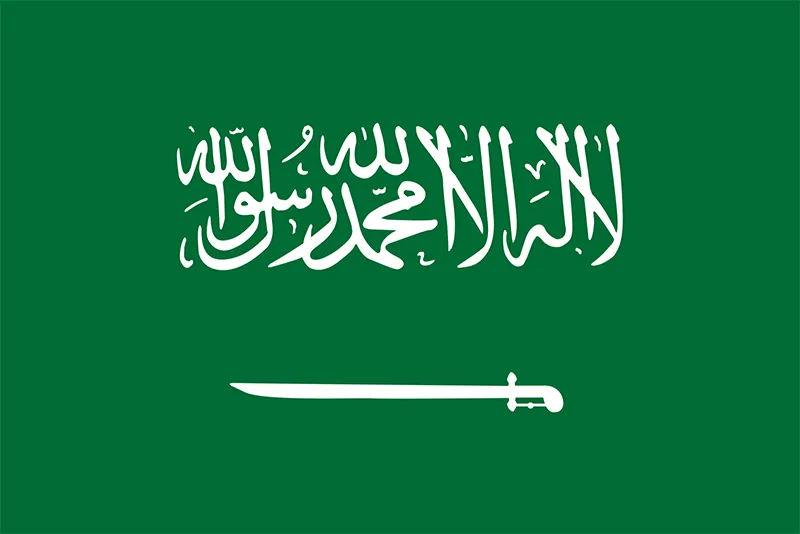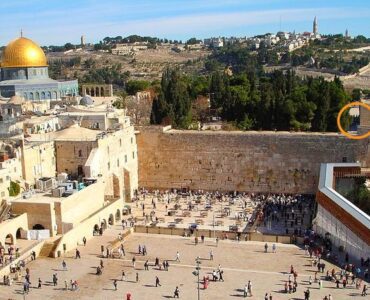The Topkapi Palace (Turkish:Ṭopḳapu Sarāyı), in Istanbul, is one of the oldest historical palaces in the world. It served as the main place of residence and administrative headquarters of the Ottoman sultans for nearly four centuries. It was turned into a museum in 1924.
History
- The construction of the Topkapi Palace began in 1459 CE, a few years after the conquest of Constantinople by Mehmet the Conqueror. It was originally called ‘New Palace’ to differentiate it from the Old Palace in Beyazıt Square. The name ‘Topkapi’ (meaning ‘Cannon Gate’) was coined in the 19th century.
- Over time, the palace lost its importance as reigning Sultans preferred staying in newer palaces (such as the Dolmabahçe Palace) along the Bosphorous. Some important functions remained in the Topkapi Palace, such as the imperial treasury and library.
- The palace is located where the acropolis of Byzantium once stood on the peninsula overlooking the Golden Horn, the Bosphorus and the Sea of Marmara. The palace complex covers an area of 700,000 sqm. and is surrounded by five kilometres of walls.
Layout
- The Topkapi Palace is typical of Turkish palaces. The distinctive element of its plan is a series of open courtyards with trees to provide shade. Each courtyard serves a purpose and are connected to one another by monumental doors. Functional buildings are arranged on the sides of courtyards. The palace plan today is quite different from when it was first built, succeeding Sultans having constructed additional buildings and annexes in their time.


The first Court
- The first and outermost court of the palace is entered through the Bab-e-Humayun (Imperial Gate). The monumental fountain outside the gate is a precious example of 18th century Turkish art. Surrounding the first court are the palace bakery, mint, palace quarters and stores for firewood. On the terraces below were the vegetable gardens that supplied the palace. Çinili Köşk (The Tiled Lodge), the first building built in the Topkapi Palace complex, is also inside this court. Immediately upon entering the court, one sees the Hagia Eirene; a Byzantine church-turned-museum dating back to the 6th century.
- The Pavilions of Judges were located at the Ortakapi (the entrance to the palace proper, between the first and second courts), in accordance with the tradition that justice should be dispensed at the gate of the palace.


The Second Court
- The actual entrance to the Topkapi Palace Museum is a second gate called Bab-e-Salem (Gate of Salutation), through which one enters the second court that was reserved for the administrative functions of the state. To this court, only representatives of the Janissaries on paydays were admitted. Certain ceremonies were held here. Historians have noted that during such ceremonies which were attended by as many as five or even ten thousand people, absolute silence prevailed. For ceremonies the Sultan himself attended, the imperial throne was placed in front of the gate at the other end of the court and all those present stood facing him with their hands clasped in gesture of reverence. To the left of the court was the administrative section where the cabinet met.


The Harem
- The Harem section of the Topkapi palace is made up of about 400 rooms scattered around small inner courts. Throughout the history of the palace, the Harem quarters underwent alterations continuously. It was the private quarters of the Sultan’s residence where his mother, brothers and sisters, wives children and other members of the family, as well as the servants and eunuchs lived. Throughout the centuries, many stories have evolved about these private quarters of the palace, entrance to which was strictly prohibited to outsiders.


The Third Court
- The entrance to the third court of the Topkapi Palace, the private court of the Sultans, is through the gate called Bab-us-Saade (Gate of Felicity). Nobody without special permission could pass through that gate, and those with permission were admitted only in the company of white eunuchs.
- Surrounding this court were the Palace University, the throne chamber, the Sultan’s treasury and the sanctuary of Holy Islamic relics. The Sultan met with the ambassadors of foreign countries and the high officials of his government in the throne chamber that is located directly opposite the gate. The servants to the throne chamber were specially picked from deaf-mutes for security reasons.
- The Library of Ahmed III located at the centre of the court is a perfect example of the blend of the baroque style with Turkish architecture.
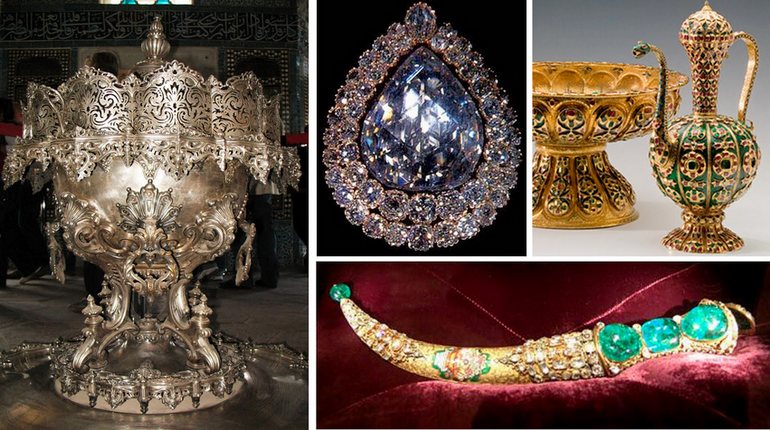

The Imperial Treasury
- The Treasury has the richest collection of Ottoman dynasty artwork, jewelry and heirlooms in the world. The pieces are housed in four rooms.
- The first contains the armours of Sultan Mustafa III, the ebony throne of Murad IV, several pearl embellished Qur’an covers and a music box from India containing a gold elephant.
- The second houses the famous Topkapı Dagger, made by Sultan Mahmud I for Nader Shah of Persia. In the middle of the room stands the walnut throne of Ahmed I.
- The third room exhibits two large, solid gold candleholders, each weighing 48 kg and mounted with 6,666 cut diamonds. They were a gifted by Sultan Abdülmecid I to the Ka’bah in the holy city of Makkah. They were brought back to Istanbul shortly before the Ottoman Empire lost control over Makkah.
- In the fourth room is the gold-plated throne of Sultan Mahmud I. This was an 18th century gift from the Persian ruler Nader Shah.


Chamber of the Sacred Relics
- Islamic holy relics were brought from Egypt by the Ottoman Empire early in the 16th century after they captured the land. They have since been kept inside a special sanctuary within the Privy Chamber in the Topkapi Palace.
- Relics include personal articles and garments of the Prophet Mohammed (ﷺ), one of the oldest manuscript copies of the Quran and the keys to the Ka’bah.
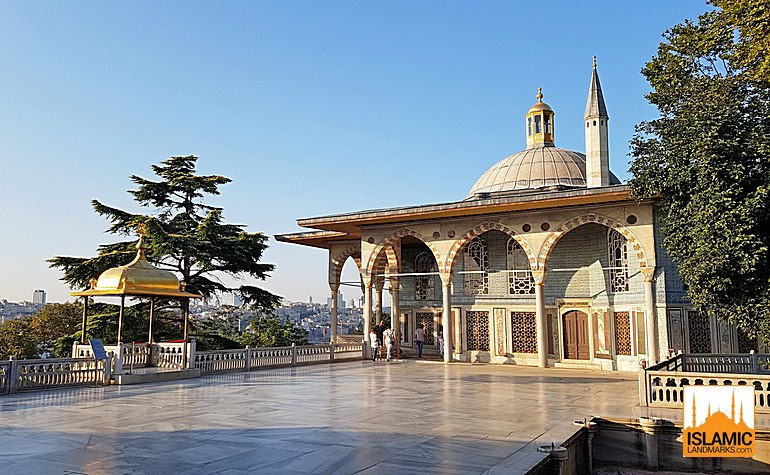

The Fourth Court
- Passageways connect the third court to the fourth where there are pavilions surrounded by gardens. The only wooden pavilions in the palace, the Baghdad and Revan Pavilions and the Mecidiye Pavilion, the last structure built in the Topkapi Palace complex, are found in this court. The terrace by the Baghdad Pavilion is the best place to enjoy the magnificent panorama of the Golden Horn and across it, the Galata Section of the city, as well as the unique skyline of Istanbul with its domes and minarets.
- At the edge of the terrace there is a gold plated bronze canopy, and next to it is the Circumcision Room which has tile panels decorating the wall by the entrance.
Conversion into a museum
- Following the end of the Ottoman Empire in 1923, The Topkapı Palace was transformed into a museum by a government decree dated April 3, 1924.
References: The rough guide to Istanbul, All of Istanbul – Ugur Ayyildiz, Wikipedia





